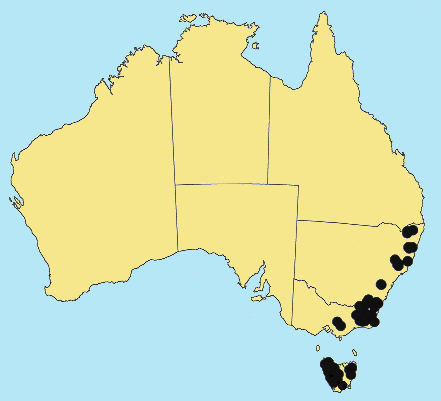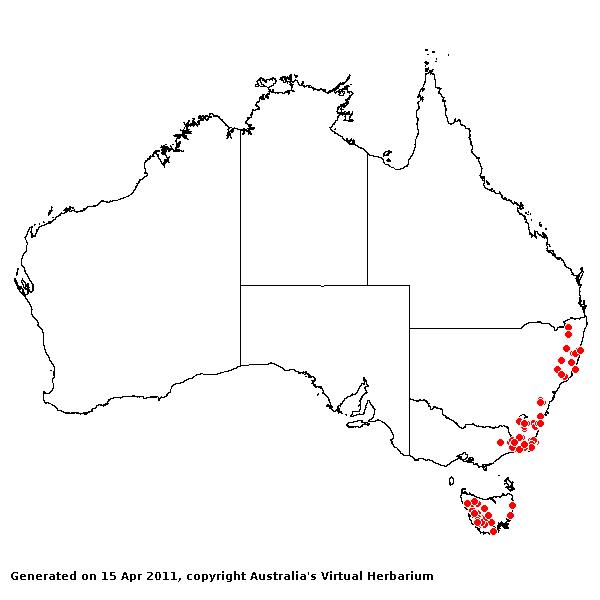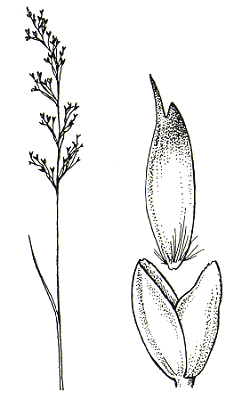Deyeuxia gunniana (Nees) Benth. Fl. Austral. 7: 584 (1878).
Classification. (GPWG 2001) : Subfamily Pooideae. Tribe Poeae.
Basionym and/or Replacement Name: Echinopogon gunnianus Nees, London J. Bot. 2: 413 (1843).
Type of Basionym or Protologue Information: Hampstead Hills, insulae Van Diemen Feb 1837, Gunn 1011.
Key references (books and floras): [1878] G.Bentham, Flora Australiensis 7 (584), [2002] D.Sharp & B.K.Simon, AusGrass, Grasses of Australia, [2008] S.W.L.Jacobs, R.D.B.Walley & D.J.B.Wheeler, Grasses of New South Wales (202), [2009] A.Wilson (ed.). Flora of Australia, Vol 44A. Poaceae 2 (211).
Illustrations: [2008] S.W.L.Jacobs, R.D.B.Whalley & D.J.B.Wheeler, Grasses of New South Wales, 4th edn (202), [2009]. A.Wilson (ed.), Flora of Australia 44A: Poaceae 2 (205, Fig.28).
Habit. Perennial. Culms erect or geniculately ascending, stature slender to delicate, 7–40 cm tall, 2–3 -noded. Lateral branches simple or branched. Leaves mostly basal. Ligule an eciliate membrane, 1 mm long, membranous, truncate or obtuse. Leaf-blades filiform, conduplicate or convolute, 2–15 cm long, 0.5–0.8 mm wide. Leaf-blade surface smooth or scaberulous.
Inflorescence. Inflorescence compound, a panicle. Panicle lanceolate or oblong or ovate or pyramidal, dense, 1.5–9 cm long.
Spikelets. Spikelets pedicelled. Fertile spikelets 1-flowered, comprising 1 fertile floret(s), with a barren rachilla extension, elliptic, laterally compressed, 1.6–2 mm long.
Glumes. Glumes similar, thinner than fertile lemma. Lower glume ovate, membranous, keeled, 1-keeled, 1 -nerved. Upper glume ovate, 0.8–1.3 mm long, membranous, keeled, 1-keeled, 1 -nerved.
Florets. Fertile lemma 1.5–2 mm long, without keel or keeled, 3–5 -nerved. Lemma apex awned, 1 -awned. Median (principal) awn subapical, 0.5 mm long overall. Anthers 3.
Continental Distribution: Australasia.
Australian Distribution: Queensland, New South Wales, Victoria, Tasmania.
Queensland: Darling Downs. New South Wales: North Coast, Northern Tablelands, Central Tablelands, Southern Tablelands. Victoria: East Gippsland, Snowfields. Tasmania: North West, West Coast, Central Highlands, Ben Lomond, South West.
Notes. Endemic. Grows in shady or wet situations by creek and river banks, and by the margins of swamps.



